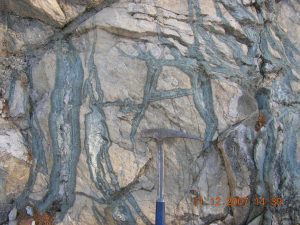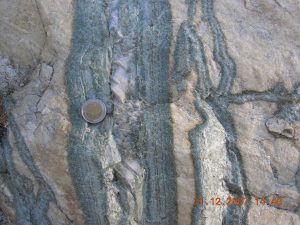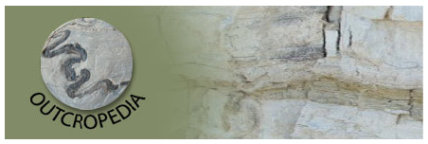Tremolite–calcite (with lesser talc and minor phlogopite) veins have rhythmic banded texture formed by the ‘‘fracture-reaction-seal’’ mechanism. Banding is due to cyclic differences in modal abundances and fabric of tremolite and calcite. Veins formed by reaction of a silica-rich aqueous fluid with the host dolomite marble along fractures. According to thermo-barometric calculations, based on electron microprobe analyses, reaction occurred at temperatures between 450 and 490 °C and minimum pressure of 2–3 kbar. Such temperature conditions occurred in this footwall region of the Simplon Fault Zone around 15 Ma, during exhumation and cooling of the nappe pile and a transition to brittle behaviour. Aqueous, silica-rich fluids concentrated along fractures, forming tremolite–calcite veins in the dolomite marbles and quartz veins in the orthogneiss.
Reference: Meggiolaro, V., Sapigni, M. & Fioretti, A.M. Tremolite–calcite veins in the footwall of the Simplon Fault, Antigorio Valley, Lepontine Alps (Italy). Swiss J Geosci 104, 355–365 (2011). https://doi.org/10.1007/s00015-011-0074-0
Coordinates: 46.196817 8.341331

General view of the
stockwork of tremolite–calcite
veins in Teggiolo
metasediments (46.196817 8.341331 )

close up view
Photo by Michele Sapigni
